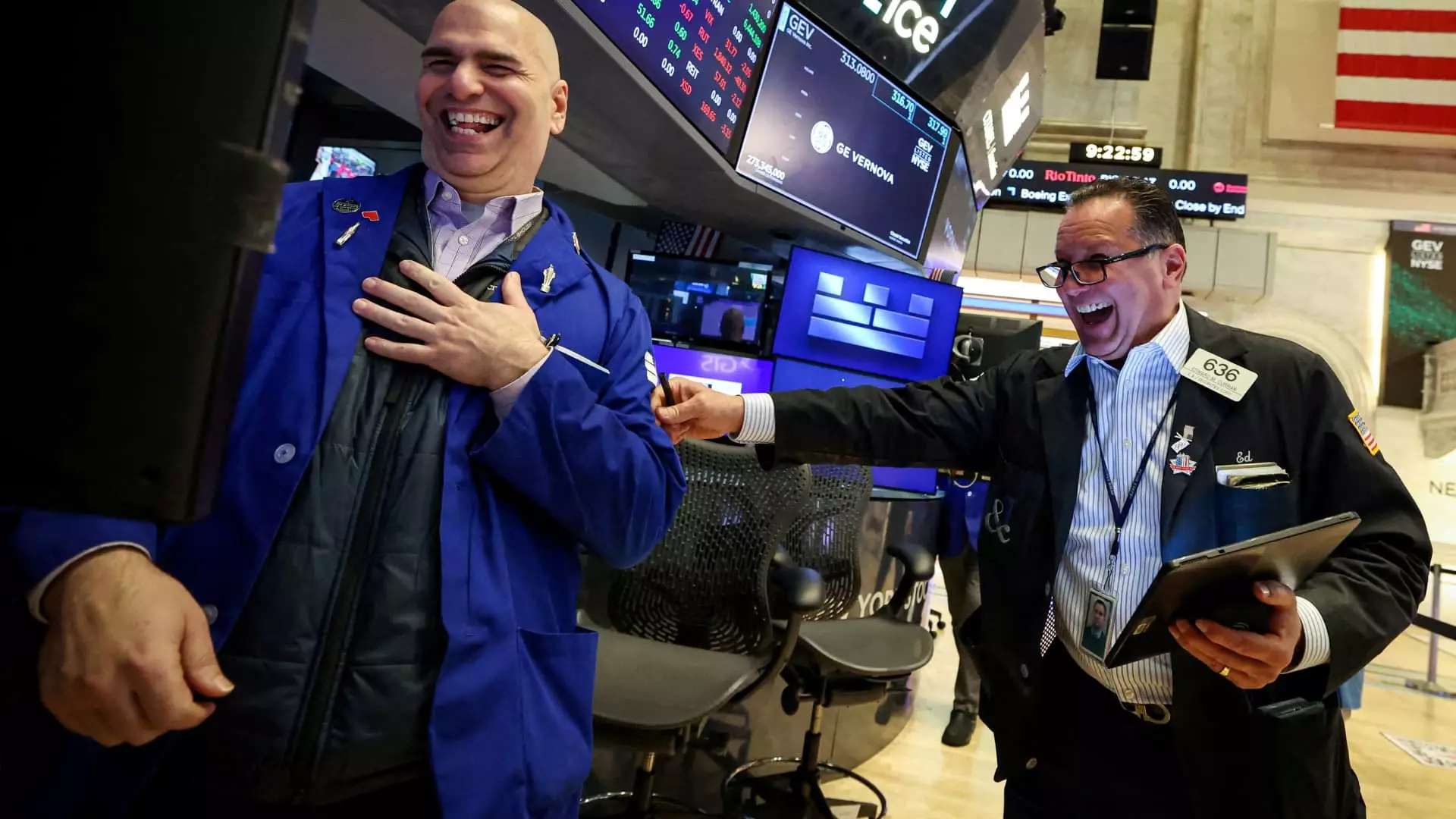In the convoluted world of finance, short selling stands out as a double-edged sword that can either lead to glorious profits or devastating losses. Recently, this complex mechanism triggered a robust stock market rally, raising eyebrows and sparking discussions about the implications of such dramatic price movements. Short sellers, typically characterized by their bearish outlook, have found themselves scrambling in a frenzied rush to cover their positions. As market volatility heightened, driven by adjustments in sentiment regarding President Trump’s trade policies and the Federal Reserve’s stance, the market saw significant upward momentum primarily fueled by these desperate actions.
Short sellers borrow stocks they believe will decline in value, sell them at the current market price, and aim to repurchase them later at a lower price, pocketing the difference. However, when prices increase instead, they face mounting pressure to buy back the borrowed stocks swiftly to mitigate losses—this creates a scenario called a “short squeeze.” The recent market rally highlighted this drama, as short sellers—who had piled on bearish bets—were caught off guard by a sudden spike in stock prices, prompting them to buy back shares en masse.
Market Misreading and Buyer’s Remorse
Despite appearing to be on solid ground, the stock market’s ascent over the past week suggests an underlying fragility. The rally has been portrayed as a response to comments from Treasury Secretary Scott Bessent, who mentioned an “opportunity for a big deal” on U.S.-China trade relations. However, attempts to tie this rally to concrete advancements in trade negotiations appear tenuous at best. The reality is that momentum was artificially erected, largely supported by short-covering rather than genuine market conviction.
This creates an unnerving scenario: are we witnessing a bull run, or merely a mirage fueled by short-selling dynamics? The quick pivots in rhetoric from influential figures such as Trump regarding the Federal Reserve and trade policies only amplify market volatility. Declaring that there’s “no intention” of firing Fed Chair Jerome Powell, after previously expressing a starkly opposite opinion, can create confusion among investors. Such knee-jerk reactions to news releases, devoid of substantial policy changes, tend to mask deeper systemic issues.
What’s Behind the Curtain?
The implications of this fluctuating market sentiment bear significant scrutiny. Yes, the Dow and S&P 500 have experienced sharp spikes, but these movements signal potential risks rather than triumphs. Persistent reliance on short-covering to sustain rally momentum raises fundamental questions about the sustainability of stock price increases. While it is all too enticing for traders to celebrate surges in asset values, it is crucial to separate transient lifts from substantiated growth.
John Flood, a managing director at Goldman Sachs, emphasized a critical point: the rally lacks the robust backing of long-term investors. The mere transition from short-covering to stable buying patterns hasn’t occurred, drawing attention to a precarious market condition that can be undermined at any moment. The current situation echoes a widespread theme—speculative excitement can lead the market astray, leaving behind a trail of unchecked optimism and an environment ripe for correction.
The Center-Right Perspective: Caution Amidst Cheer
From a center-right liberal perspective, navigating these market dynamics calls for a more cautious approach. Optimistic narratives surrounding financial markets shouldn’t mask the reality beneath the surface. While there is an undeniable thrill to stock market rallies, it’s imperative to sound the alarm on overreliance on speculative trading practices that can create volatile situations. Vigilance must prevail as both consumers and investors alike engage in the markets, ensuring that decisions are backed not just by swings in sentiment but by tangible economic indicators.
In an era where technology-driven trading algorithms can rapidly amplify market trends, understanding the psychological undercurrents behind such upswings is fundamental. The stock market is not merely a collection of assets but a reflection of broader economic health, and as such, ensuring its stability should take precedence over fleeting euphoria. Balancing optimism with prudent risk assessment will be crucial as we tread these uncertain waters. The stock market needs the anchor of long-term investors who view stocks as valuable holdings, not just vehicles for quick profit. Only then can genuine growth be achieved.

